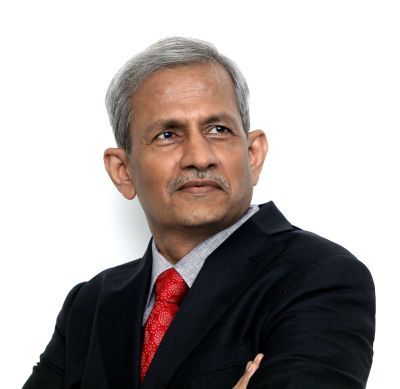The debate about the future of Artificial Intelligence is heating up. There are big and small conferences taking place every week. The social media is abuzz with talk about competition between Open AI developed by a US company, and DeepSeek by a new Chinese startup. The developing countries are fighting for access to the cutting-edge technologies.
The debate ignores the problems at the top end of the AI sector and at the bottom end of the sector. At the top end the biggest problem is that AI might become more powerful than humans. It may happen by 2035 or even by 2030. If Artificial General Intelligence is created, it may make us humans its slave. It may destroy all life on the earth. It may manipulate the cyber systems used in the nuclear weapons governance. It may then launch a world war without the permission of anyone in Kremlin or The White House.
At the bottom end, there is a risk that large swathes of humanity may not even learn basic technology. More than 2 billion people will become inferior to us the literate people. This will create a global caste system. Almost one third of people in the world do not have access to Internet. According to the United Nations, perhaps half of the school going children are deprived of Internet.
Global political leaders meet in big conferences. It is common for them to issue statements about “ethical use of AI” to address the top end problem and “inclusion” to address the bottom end of the problem. This is lip service. The leaders and their advisers are good at using very general language. They do not accept existential risks to humanity. They also do not recognise the risk a new caste system which excludes people without computers and Internet.
Demis Hassabis, Nobel Laureate, is known for developing AI to figure out the exact shapes of proteins in our body. It can lead to discovery of many new medicines. He has suggested the creation of an organization like the International Atomic Energy Agency (IAEA) to govern AI. The world leaders do not want to discuss it. I had asked many experts from powerful countries in the last two years if we can start by creating a special department in the IAEA to govern the role of AI in nuclear weapons. They all said that it was impossible. In December, I met Dr Mohamed ElBaradei, Nobel Laureate, and former Director of IAEA for a decade. He said it was perfectly possible. Next morning, I asked the same question to a senior official of the Government of Austria. He has been dealing with IAEA for decades. He also said that it was possible. We can begin with such a department in the IAEA. At the same time, the world can negotiate Demis Hassabis’ idea of a global agency for AGI, and not just for the role of AI in nuclear weapons.
When we talk about the debate at the bottom end, I found an amazing solution last weekend. Sachin Joshi is a young educationist in Nasik, a city in Western India. It is a semi-rural town. Like many cities in Asia, the Middle East, Latin America and Africa, Nasik has a large population of poor children who do not have computers, Internet, and smartphones. They often do not even have electricity. They go to government schools which do not have basic facilities. Many 10year old children do not have the ability to read and write which the 5-6 year old children in the beginning of the primary school are supposed to have. How can you teach AI tools to such children? Or should they be permanently deprived of the new technologies in the world?
Sachin Joshi has created a mobile bus. It is known as “AI on Wheels.” It is a bus with computers loaded with many different AI tools. It has a recording studio, robotic laboratory, tablets, laptops, screens, high speed modems, and many other facilities powered by solar panels. It goes to the slums of Nasik and uses AI tools to train the children of casual labourers to learn reading, writing and mathematics at an extremely fast pace. The teachers in the bus also teach the children to learn and use AI tools for many creative activities. It is expected that the bus will bridge the digital gap in Nasik in the next few years.
One bus can change the life of only a few hundred children in one city. It cannot change the world. We need hundreds of such mobile schools in India, and indeed in the Middle East, Asia, Africa, and Latin America. The poor have the right to the best and the latest technology in the world. While we work to solve the problems at the bottom of the pyramid, we should not lose the glimpse of what is happening at the top. We need to pursue the ideas proposed by Demis Hassabis for a global agency to prevent AI from taking over human civilization.
Sundeep Waslekar is the President of Strategic Foresight Group, an international think tank, and author of A World Without War
